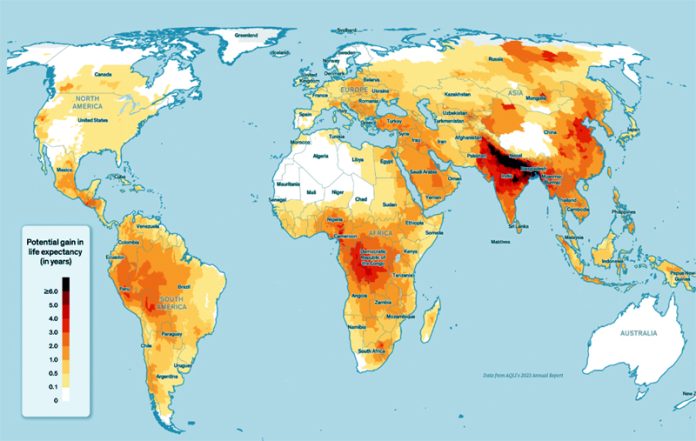The report by the Energy Policy Institute at the University of Chicago highlights significant strides in India’s battle against air pollution. With a 19.3 percent decline in particulate pollution in 2022-the second-highest globally after Bangladesh-India has seen the average life expectancy increase by a year. This achievement offers a glimmer of hope in an otherwise dire situation, where 42.6 percent of the population still breathes air exceeding the national PM 2.5 standard. India’s air pollution crisis is not just an environmental issue but a public health emergency. The report shows that if India fails to meet the WHO’s recommended PM 2.5 concentration level of 5 micrograms per cubic meter, citizens could lose an average of 3.6 years of life expectancy. In heavily polluted areas like Delhi, this loss could be as much as 7-8 years. While the 17.2 percent reduction in particulate pollution in the northern plains is noteworthy, these gains remain insufficient for safeguarding long-term public health.
Policies like the National Clean Air Programme have been pivotal in catalysing change. With a target of reducing particulate pollution by 20-30 percent by 2024 and now aiming for a 40 percent reduction by 2026, the NCAP has started delivering tangible results. Districts covered by the program have seen a 19 percent decline in PM2.5 levels, contributing to an overall life expectancy increase. Yet, there remains room for improvement, especially in regions outside the NCAP framework that are still grappling with hazardous air quality. Additionally, innovative approaches, such as Gujarat’s pioneering particulate pollution market, reflect a broader commitment to balancing economic growth with environmental stewardship. Initiatives like the Pradhan Mantri Ujjwala Yojana have also played a key role in reducing household emissions by promoting clean cooking practices, further highlighting how policy intervention can lead to rapid improvement. However, the battle is far from over. Air pollution, even at reduced levels, still poses a significant threat to millions. India’s policymakers must now focus on accelerating these gains, refining national air quality standards, and ensuring consistent, long-term action.
Trending Now
E-Paper


